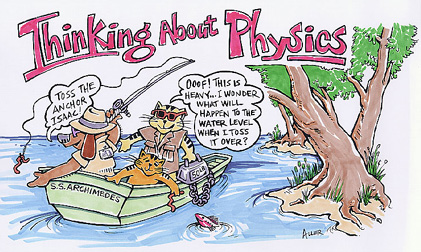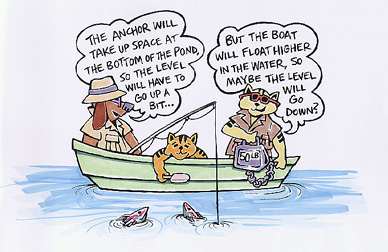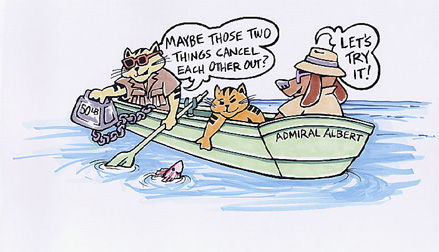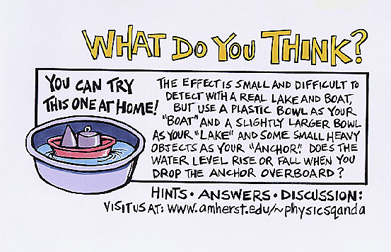





Our friends are in a rowboat in the middle of a lake. They wonder what will happen to the water level of the lake if they throw the big anchor overboard and let it sink.
The water level might go up (because the anchor will now be sitting at the bottom of the lake, taking up space); or it might go down (because the boat will be lighter and will float higher in the water); or perhaps those two things would cancel one another out, leaving the water level unchanged.
On this one, we suggested that you can "try this one at home". But the effect is sure to be a fairly small one if you try this in a real boat in a large lake, so we suggest making a "toy" lake and boat. For instance, we used a 6-cup Rubbermaid plastic container for our "lake" and a 2-cup container for our "boat". We put some chunks of metal in the boat to be our "anchor". Using a 6-inch ruler, we measured how far down the water level was from the rim of the lake. Then we took the metal chunks out of the boat and dropped them overboard and measured the water level again.
We suggest you go try it yourselves, and then come back and click here to see what we found out and why (after we had done the experiment), it was "obvious" what was going to happen.
By the way, this "rowboat" problem is an old favorite of physics teachers. In our experience, most physicists - when they first hear the question - are not at all sure what the answer is. It's only after they have thought about it for a while (and probably after writing some equations) that they say it was "obvious".